Part 4: ALPINE ADVENTURES EXCEED EXPECTATIONS – LIECHTENSTEIN and AUSTRIA
MAIENFELD, SWITZERLAND (OR HEIDILAND TO DEVOTEES!)
In Part 3: A toe dip into Stresa, Italy and a relaxing cruise around Lugano, Switzerland that explored many ancient and diverse communities.
Before leaving Switzerland behind and crossing into Vaduz, the capital of Liechtenstein, we stopped in the border town of Maienfeld, Switzerland. For such a small area, Majenfeld holds two great distinctions of world import.
It’s the birthplace of Heidi, a story written in 1881 by Johanna Spyri. The story may have been a work of fiction, but try telling that to the international tourists who flock here to visit a theme park-like area called Heidiland to see
where she “lived” in her beloved mountains with her endearing grandfather. The story’s popularity was so enormous, the city changed its name to Heididorf (Heidi’s Village). There’s a small museum, goat Peter’s goat stall, a tiny post office from which to send postcards, and beautiful mountain scenery. We didn’t visit Heidiland, but if we had and it didn’t live up to one of my favorite Shirley Temple movies, in which she played the heroine Heidi, I think I’d have felt let down.
Majenfeld is also home to Schloss Salenegg, Europe‘s oldest winery, in business since 1068. The abbot of Pfäfers Monastery laid the foundation for the castle and vineyard in 950 A.D. The von Salis family took over the Baroque castle in 1330 until the von Gugelberg family bought it in 1658. They’ve held onto the castle for over 400 years. We toured the vineyards, learned the castle has 79 rooms, of which 28 are still usable, and 11 fireplaces. The owner uses up to eight of the rooms to live in. I’m glad I’m not the one washing the windows: there are 150 of those.
The vineyard devotes about 30 acres for pinot noir grapes and nearly four acres to chardonnay grapes. The vines range from 40 – 50 years old. The family has planted 40 different plants around the grapevines to naturally nurture them. There was a difference of about a hundred years in reference materials, either 1538 or 1656, as to when the impressively massive wooden wine press was first used, but in 1926 the family switched to a double press. They use French oak barrels, which adds notes of caramel, vanilla and pepper, and produce about 70,000 bottles a year, although nearly all is consumed within Switzerland. We tasted a Riesling, a rose’, and then their famous pinot noir, while noshing on cheeses, meats and breads.
LIECHTENSTEIN
Our tasting and noshing at Schloss Salenegg whetted our appetites for exploring Liechtenstein, the fourth-smallest European sovereign nation in the world, nudged out of first place by The Vatican, Monaco and San Marino. Liechtenstein was originally under the protectorate of Switzerland until the Liechtenstein family bought the land, which included a title, in 1719. The country measures three miles wide by 15 miles long and has about 31,000 citizens. Its wealth emanates from banking and first edition postage stamps. The power tool company Hilti is based here. The citizens have 22 public holidays a year and no income tax.
The Prince of Liechtenstein lives in and rules over the country. As just one of their homes, the royal family lives in the renovated Castle Vaduz, built originally in the 12th century.
Save some Swiss francs to get your passport stamped with the official Liechtenstein seal. There are a few places on the main street and in the bus parking lot where you can fork over three francs for the stamp. I mean, really. Who among your friends has a Liechtenstein stamp on their passport?
SEEFELD, AUSTRIA
Where we stayed:
Hotel Seelos is a family-owned alpine-styled chalet located near the main street, the Olympiastrasse. The rustic inn is done in light wood floors and beams. Our headboard resembled carved mountains. Rooms have balconies with glorious views of mountains and valley. The bathroom is good-sized, with the toilet occupying its own room. There were no washcloths, but multiple bars of soap. There is no AC because of the high elevation, but in July, we found the temperature had not cooled much from the daytime highs in the 80s.
What we learned:
Austria has nine federal states. We visited three on this trip: Tyrol, Salzburg, and Voralberg.
In Austria, it is required for every child to learn at least one musical instrument.
In 1964 and 1976, Seefeld Village was the site for Olympic cross country skiing events.
Seefeld’s population is about 5,000
Where and what we ate and drank:
Our group dinner in Hotel Seelos’ restaurant began with a Caprese salad, followed by an abundant serving of juicy roast pork and sauerkraut that Russ and I both chose. On the plate was also a bread pudding that we thought too dense and gummy. Our dessert selections more than made up for not eating the bread pudding. Two wedges of rich chocolate brownies, more cakelike than fudgy, were topped by fresh raspberries in a raspberry sauce and a dollop of whip cream. The other was a rolled up crepe resembling a flower, encasing ice cream. Our wine purchase to accompany dinner was a 2018 Scheiblhofer cabernet sauvignon.
Our last evening in Seefeld was pretty special. The group was forewarned we’d be walking to the restaurant, Wildmoosalm, but as we gathered outside the Seelos Hotel, horse-drawn carriages hired from Fiaker Kutschenfahrten Kastrati Enver drew up to carry us the 10 to 15-minute journey up a forest road leading to the Serbian-family owned restaurant. By car, the trip is only three minutes from the center of Seefeld. Walking would be closer to 40 minutes. The exterior was festooned in colorful flowers and umbrellas that unfold over front porch tables. Inside, folk art mementos crowded walls and hung from the ceiling. The staff of Wildmoosalm, which means Wild Marshy Area Farmhouse, greeted us as if we were long-separated friends come for a reunion. The food was just as warm, comforting, and welcoming.
Russ and I both had pre-selected beef broth with thin noodles and a salad. My dinner plate could barely contain the generous portion of pork schnitzel with French fries, accompanied by a scoop of fresh cranberry sauce. I downed as much as I could. Russ enjoyed a locally-produced bratwurst at least a foot long, with roasted potatoes (ever prevalent on menus this trip and called rosti), and tangy sauerkraut. We were nearing food nirvana, but how could we not dive into the hearty serving of flaky apple strudel with vanilla ice cream? The seasonal restaurant may seem off the beaten path, but the stellar reputation for the lively atmosphere and ethnic specialties keeps this place humming with patrons.
INNSBRUCK
The capital of Austria’s westernmost state of Tyrol, Innsbruck, hosted both the 1964 and 1976 Olympics. The name means Bridge across the River Inn. It is the fifth largest city in Austria.
What we saw:
We took a cable car ride aboard the Nordkettenbahnen to Nordkette, the 7,000-foot-high “mountain at the heart of Innsbruck.” Unfortunately, that day grey clouds had rolled in. We could only enjoy glimpses of the surrounding mountains and valley below before the fog folded in around us like a scene from the 1954 movie, Brigadoon.
We walked through the Hofburg Gardens, the largest natural park in the city. The Hofburg Imperial Palace was a former Hapsburg palace. Originally built in gothic style, it sat empty until the mid-18th century when redone by Maria Theresa, Archduchess of Austria, Queen of Hungary and Bohemia in Baroque glam as preparation for the wedding of her son, Leopold. Vitally important for her to show off their wealth, Maria Theresa had the church adorned in silver and gold accents. Afterwards, it sat empty again until converted into a museum. On the top floor of the building, government employees are eligible to live there at lower costs than city rents. Opposite it is the well-known arts venue, the Landestheater.
We also saw the Tiroler Volkskunstmuseum, attached to the Hofburg Church. A folk art museum, it is considered one of the best regional heritage museums in Europe. Locally sourced rose marble forms the columns of the church.
Streets in the historic Old Town are made of large red bricks and the plazas are done in small-sized bricks set in an arc pattern.
One of the buildings I thought particularly stately is the Goldener Adler Hotel, now a Best Western hotel and restaurant. Painted trees climb the walls and surround windows. Etched tablets listing the names of famous people who’ve stayed there over the centuries are posted along the outside of the entrance. The luminaries range from Wolfgang Amadeus Mozart to Maria Von Trapp to John Glenn.
Our group of 24 Odysseys Unlimited tour members could only gaze up in wonder at the ceiling of the 18th-century Baroque-styled Cathedral of St. James. The richly-detailed ceiling has three domes… except it doesn’t. The ceiling is actually flat though the effect is 3D. There is also a magnificent organ housed in the church.
What we learned:
Innsbruck is a city of pastel-colored buildings and decorative paintings of designs, and flowers adorning buildings.
Most buildings housing businesses are privately owned, but must be preserved according to their historic origins.

The Cathedral of St. James makes you think the ceiling has three domes but it is actually 3-D paintings.
Where and what we ate and drank:
When sightseeing on Nordkette proved less than successful due to the foggy, drizzly weather, we opted to visit the second story café for a quick, light bite. One floor below is a more sophisticated dining venue, but we hoped the sun might peep out at any moment. I had a glass of wine and Russ a beer and a frankfurter. I ordered a bowl of bacon dumpling soup. I only had ordered one dumpling, but two enormous dense, chewy dumplings at least four inches around rose from the bowl. Even with Russ and I both taking spoonsful, we never came close to finishing it. What made the event memorable though, wasn’t the food. We lucked into an Oom Pah Pah band sitting around a table in their lederhosen, Tyrolean hats, and crisp white shirts, jamming away We ate our soup listening to music.
Ice cream is called eisgrotte.
We stopped at one of Innsbruck’s most famous pastry shops: Munding Konditorei. Shelf after shelf of artistic pastries lined the glass-shelves. You place your order, find a small outside table (or hop from foot to foot as we did waiting for people to evacuate one), and await the then quick delivery. We had a hazelnut-raspberry jam torte and a dish of chocolate ice cream.
TYROL
We were only in Tyrol a brief few hours, but those hours were packed with information and an interesting step back in time as we explored the Museum of Tyrolean Farms (Museum Tiroler Bauernhöfe). Tyrol has been alternately occupied by Germany, Italy, the Austro-Hungarian Empire and France. This interactive exhibit features dozens of preserved farm houses dating mostly from the 15th century on. We had an excellent local guide who filled us in on the histories and evolution of several of the farm houses, collected and re-located to this living museum, and the personal lives of the families who had built and lived in them.
The museum was founded in 1974 to preserve 14 Tyrol farm houses, a fire house, school, water mill etc. on roughly 20 acres (eight hectares). The first house we visited was built in the 16th century. The stables were built under the same roof. The house has reverse glass paintings hanging from the walls, a popular decoration in that time period. The outhouse was up front.
The next house featured a large bell attached to the roof, used to call in the workers and family for a meal or to signal emergency. The pattern chimed would indicate the situation. Most of the houses bore names. This one is called Hacklerhof and was built in 1675. The design was quite common in the Tyrolean Unterland. (Note: Tirol and Tyrol are used as alternate but equal spellings.) A little square hole above the door allowed swallows to get in and eat the flies. Having a swallow nest erected was considered a good luck omen. The swallow hole was also where the soul of the dead person was able to depart and soar to Heaven. Sometimes a captured singing bird would be caged in the main room as entertainment. A short hallway led to the attached stables so the farmers didn’t have to brave the elements to milk cows or feed horses. The stables were only mucked out once a year (and they still smell like that!). When cows were returned from winter mountain stays, there would be a major celebration. The farmers and families would drink schnapps and create fern wreaths decorated with silk roses that would be tied around the cows’ necks to honor them.
A carved sign on the front door to the right always bore the signature of the proud builder. Rooms off the porch would be for the pigs. They were valuable meat, especially in winter, and had to be protected. Oiled parchment was used to cover small windows. Placed at different levels and referred to as the Windows of Trinity, their small size helped retain the house’s heat. These were not wealthy people. Their diet consisted of dumplings, apples, porridge etc. This must be where “family style serving” came into being. A large pot of food would be prepared. Each person had their own spoon that they dare not lose because when it came to mealtime, they all dipped their spoon into the one pot to eat. When people “gave up their spoon,” it meant they had died.
The third house we toured was built in 1577 and is called Hörlhof (the house of a merchant). The last owner donated it to the museum. The front entrance was decidedly Bavarian. Because it was originally constructed near a lake, the ground floor was stone. The owner of this house owned weaving looms, not necessarily for the homemaker, but for itinerant weavers who would earn their keep by weaving. In this house were beautiful carved and painted wooden armoires. There were multiple bedrooms as it was common on Tyrolean farms for the servants to share sleeping quarters with family members of the same sex. Every farm had a well and a vegetable garden.
The time was flying by. Apparently our group asked a lot of questions, but we had more to do, so we hurried along. On our way out, we passed a fire brigade building from the 19th century and a saw and water mill combo. The oldest house within the museum’s boundaries was built somewhere between 1200 and 1280. This house was from the Zillertal area, famous for their singers and one of its residents. It is here that Franz Xaver Gruber is credited with writing the lyrics to “Silent Night.” Zillertal valley was known for their national singers who regularly performed the song while travelling and touring Europe and America.
You know that expression, “Knock on wood?” I grew up with that phrase, with the intent of staving off any negative impediments. During this tour of the Museum of Tyrolean Farms, I learned that the farmers would bring trees into the house as a blessing, so “knock on wood” literally meant to knock on the tree wood to release good spirits, like a protective amulet.
We didn’t visit the Schwaz Silver Mine, thought to have been the largest silver mine of the Middle Ages, but we did hear how a silver coin produced there in honor of Archduke Maximilian, ruler of the Mexican Empire and brother of Emperor Francis Joseph of Austria, eventually became the American dollar coin. Here’s the tale: Maximillian declared himself Emperor and a propaganda coin was issued in nearby Hall but minted from the Schwaz Silver Mine. Later the coin became known as Tala and was used in both Mexico and the Americas. Eventually, the coin was redesigned and is considered the grandfather of the American silver dollar.
KUFSTEIN
Kufstein was an even shorter visit than to the farms, but we needed lunch and a rest from travel before getting to Salzburg, where we’d be staying for the last few days of the two-week tour (and for Russ and I before heading for our extension trip to Munich, Germany.) The “town” seemed to be one long plaza bordered by shops and restaurants, but at noon we could be anywhere outside and hear a couple songs broadcast from The Heroes’ Organ (“Heldenorgel”), the largest free-standing organ in the world and housed in the Kufstein Fortress. It was built in 1931 by Oskar Walcker in the Citizens’ Tower at Kufstein Fortress near the Town Hall to commemorate the dead of World War I. We were hungrier than in the mood to browse shops, short on time, and eager to hear the organ concert, so we stopped for a bite at Mama Puccini, an Italian pizzeria with an expansive deck overlooking the plaza. Our waitress was a South African student living there while attending international business classes and couldn’t have been more excited o have American customers so she could practice her English. In truth, she spoke articulately and without need to be corrected. Russ ordered pizza (what, you thought he’d forego one of his favorite dishes?) and I had a bowl of onion soup, a light broth loaded with diced onions al dente and a slice of toast. At precisely noon, the 15-minute organ concert resounded throughout the piazza while we happily munched away.
In Part 5: Mozart composed, the Von Trapp family sang their way into our hearts while Hitler broke hearts from his Eagle’s Nest.
Karen Kuzsel is a writer-editor based in the Orlando area who specializes in the hospitality, entertainment, meetings & events industries. She is an active member of ILEA and MPI and is now serving on the 2019 – 2020 MPI Global Advisory Board for The Meeting Professional Magazine for the fourth consecutive year. She is a member of the Society of Professional Journalists. Karen writes about food & wine, spas, destinations, venues, meetings & events. A career journalist, she has owned magazines, written for newspapers, trade publications, radio and TV. As her alter-ego, Natasha, The Psychic Lady, she is a featured entertainer for corporate and social events. karenkuzsel@earthlink.net; www.ThePsychicLady.com; @karenkuzsel; @thepsychiclady. Food photos for this series by Karen Kuzsel. All other Photos by Russ Wagner, a retired government planner/builder who has a passion for trains, travel and taking photographs.
www.heididorf.com/en/heidis-world/heididorf.html
www.myswitzerland.com/en/experiences/winery-schloss-salenegg
www.seefeld.com/en/a-horse-drawn-coach-rides-enver-kastrati; www.fiaker-seefeld.at
www.hofburg-innsbruck.at/623/php/portal.php?language=en
www.triphobo.com/…/tiroler-volkskunst-museum-tyrolean-folk-art-museum
www.tyrol.tl/en/highlights/sights/silver-mine-schwaz/
www.puccini-kufstein.smarto.net/

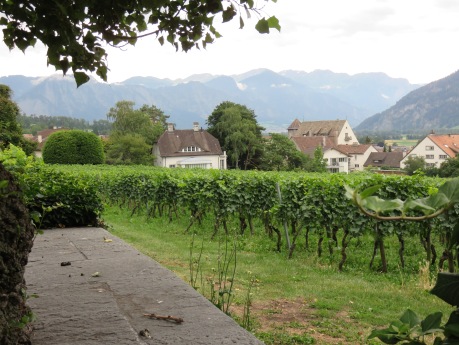


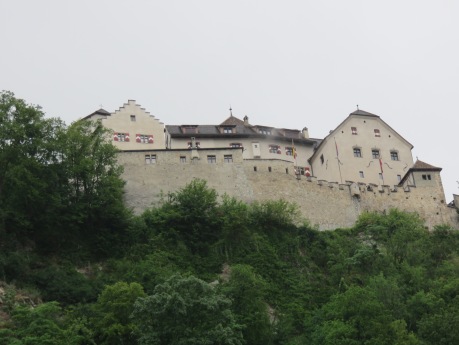





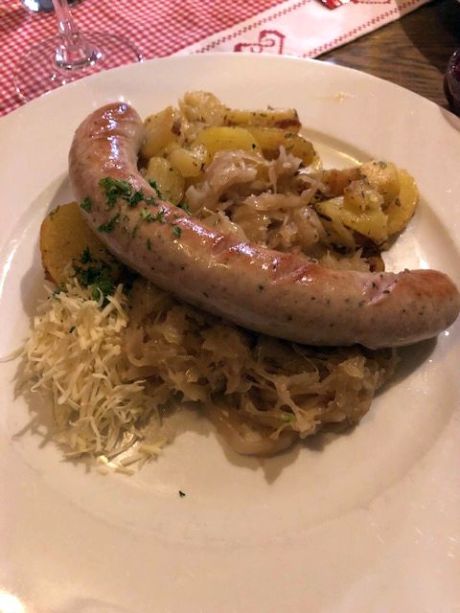



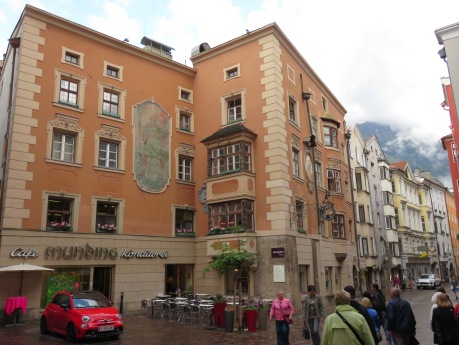
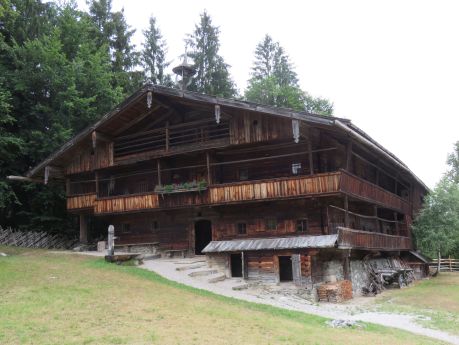
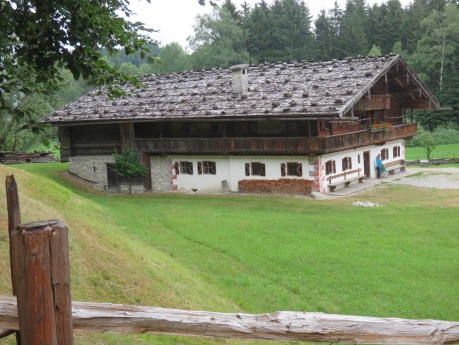


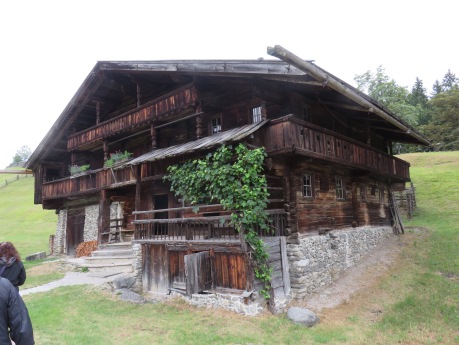


Leave a Reply
Want to join the discussion?Feel free to contribute!